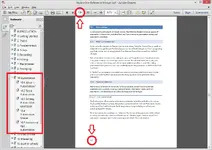S
sparky123
Member
been a while since I've visited, still consider myself a newbie. here's my question.... how can I raise the level of certain parts of a track( without affecting the rest of it) using presonus studio one pro2?
Or used to be you moved the volume controls! Called 'mixing.... how can I raise the level of certain parts of a track( without affecting the rest of it) using presonus studio one pro2?

I know what you meant, and I'm pretty sure that you know what you meant, but this is a noob section, so...Automation is something that actual machine type DAWs...
What is, automation?
EDIT: Was going for a Jeopardy feel, but I think that fell short.

I never use it. Or at least, not in the way that it's being described by others in this thread.
I prefer to chop up my track (known as "item" in REAPER) and even out the levels that way. In REAPER, you can only bring down the level of an item, not up. So, I bring down the parts that are louder than the rest, and then turn up the whole track with the fader, if I need to bring it up. Not sure if every DAW works that way, so it might not apply to what you're using. But, just presenting another option.
Yeah, I didn't want to get too complicated, but I was going to mention that I've done that, too.if I do want to bring up the gain of an audio block I can just normalize it, then trim it back down with the gain function.

I know what you meant, and I'm pretty sure that you know what you meant, but this is a noob section, so...
DAW means "Digital Audio Workstations" and generally refers to software which is used for recording and manipulating audio in a digital format. That software may come bundled inside a hardware unit or be a separate program installed on a computer or other digital device.
Automation actually predates any DAW that I know of. The first was completely analog, driven by an audio clock signal coming off the tape, modulating voltage controlled motors to move the analog pots which affected the level of analog signals coming off of tape. Before too long at all, the actual control circuitry became digital, but (at least) the clock source was (and still is, for things that follow MTC) quite often still essentially an audio signal recorded to tape. Eventually we started recording all of the audio to digital, running to a digitally-controlled analog mixer. Then we moved the "automation equipped" mixer into the software which we were (are) using to record.
